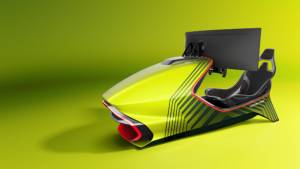Sim city: What you need to know about Racing Simulators
On the list of things that have an annoying habit of disappearing when I need them the most, earplugs rank very high. It was this thought that popped into my head while I was standing at Turn 1 at Zolder, watching a pack of particularly loud GT cars come barrelling down the main straight with a deafening roar. Twenty laps later, I had a constant ringing in my ears, but the race was getting very exciting indeed. The lead Audi R8 had come up to some traffic, and while the driver was tackling those pesky backmarkers, the race had gotten away from him. Things played nicely into the hands of the driver in the chasing Mercedes-Benz SLS AMG. The AMG had been gaining on the R8 steadily, but logically wouldn't have been able to get past the R8 unless something drastic happened. And then it did. All of a sudden, the R8 simply couldn't get past one particular backmarker. And when the two cars crossed the chequered flag, it was the AMG first and the R8 second.
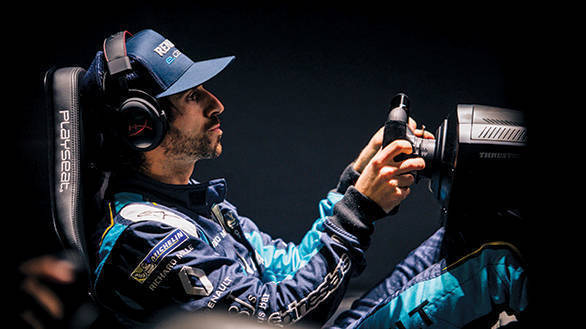 Nicolas Prost competing in the Visa Vegas eRace held in Las Vegas in January this year, a full-blown simulator racing competition
Nicolas Prost competing in the Visa Vegas eRace held in Las Vegas in January this year, a full-blown simulator racing competition
After the races when I caught up with the driver of the R8, who'd done very well over the rest of the race weekend, I asked him what had gone wrong and why he simply didn't pass the seemingly slow 458 Italia ahead of him. It turned out that the R8 had been stuck in sixth gear for the last five laps of the race, and it had been all he could do to get through the race without losing too much time. He was grateful that he'd finished second, he said. And instead of choosing to focus on the fact that he'd lost, I remember him gleefully grinning and telling me that he was very happy because he had been very well-prepared for the race. It had been 12 years since he'd driven at Zolder last, and he had wanted a quick refresher of what the track was like. So a couple of days before the race, he'd strapped himself into his racing simulator, and had driven lap after lap of the Belgian circuit in an Audi R8. "I was doing 1min 29sec laps on the simulator, and my timings during the race were 1min 30sec laps. So it's good," he nodded.
Years earlier I'd watched this very driver as he coached a room full of aspiring racecar drivers from India. He'd waxed eloquent on the benefits of using racing simulators. Of how even if one didn't have the very best equipment, since not everyone's pockets were as deep as the Marianas Trench, one could improvise. One could use a basic simulator set-up, with rubber bands tied on either side of the helmet in order to mimic G-forces that drivers in Formula cars felt. One could make various little adjustments to make it feel more real. A little imagination is all it would take. It was heartening to see that the driver practised what he preached, and that it had held him in good stead over the course of a race weekend. It was enough to convince me that racing simulators were the most useful tool, after actual laps in real racecars on proper racing circuits, to help drivers get better lap times. And when you break things up, you can tell why.
Bridging the gap
What are the factors that a racing simulator can help you with? At its most basic level, a racing simulator will be a complete course revision that a driver needs. It makes you go over the racing circuit in such a way that you have it seared into your mind. But on a deeper level, a racing simulator helps you go through the motions of exactly what you ought to be doing in a racecar. It makes you conscious of the flow of action - when and how to accelerate, when and how to brake, and when and how quickly you need to get off the brakes and back on the accelerator - and your reference points on the track. Constantly putting in lap after lap only makes the action flow more precise, and makes a racer the well-oiled machine that he needs to be when he's attempting to go faster than everyone else around him.
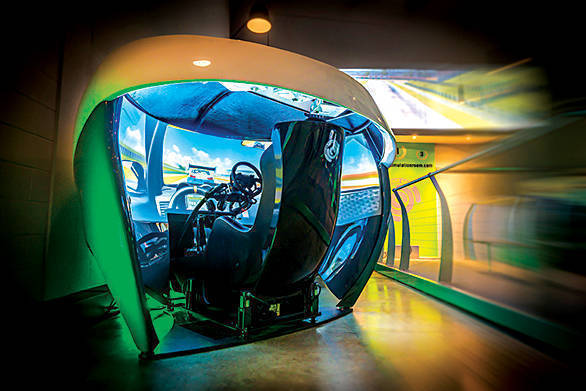 The full-motion TL3 Simulator at the Slough Trading Estate in Berkshire looks very sophisticated
The full-motion TL3 Simulator at the Slough Trading Estate in Berkshire looks very sophisticated
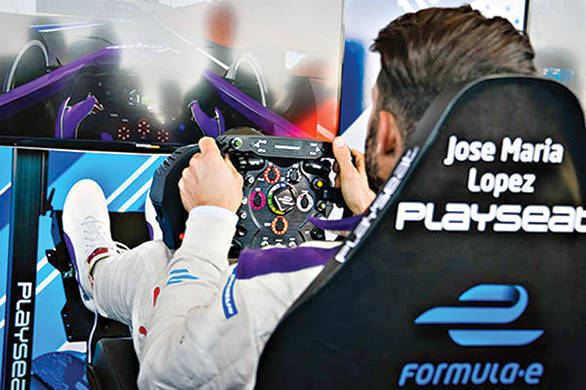 Jose Maria Lopez in a simulator that uses a Playseat and a Thrustmaster steering wheel
Jose Maria Lopez in a simulator that uses a Playseat and a Thrustmaster steering wheel
There's more to it though. Simulator training helps racers mentally too. It helps keep your reflexes sharp, and it helps reduce your reaction time, which in turn helps you achieve that fast lap, which is halfway to your ultimate goal of a race win or a championship title. It helps in terms of physical fitness - your arms, legs and neck all get a thorough workout, based on the sort of simulator you're using and the amount of feedback it can offer. And simulators also help you learn what works and what doesn't work in terms of setting up a car. Yes, that's really how accurate they can be in today's world.
What it can't do
Technology is terrific. And simulators have evolved to a level where the software and hardware can be state of the art. Throw in a virtual reality headset, and you can feel like you're really in the race. Except, perhaps, in terms of force feedback. Nearly every simulator steering wheel in the market will offer you feedback, as will the accelerator and brake pedals. If you get a seat that moves, you're going to be able to mimic some amount of movement that you'd feel in an actual racecar too. But, while you can feel the body roll transmitted via the suspension, you're unlikely to feel the exact grip limit of the rear tyres. Unless, of course, you're a Formula 1 driver with access to the most state-of-the-art simulator that money can buy. In which case this article probably isn't for you. There's another thing that a simulator can't do - it probably can't overcome sheer outright talent. By this we mean that if a driver is naturally very fast, a simulator is going to sharpen his skills and help him go faster. And it's going to help a talented driver with a complete lack of testing, overcome that lack of testing possibly to a large extent. But it isn't going to help, beyond a certain point, a driver predisposed to being slow challenge the fastest people on the grid. In that sense, perhaps it's incredibly similar to a racecar and a racing situation.
What's more?
Well, everyone's heard of the Nissan GT Academy, which aims to take simulator racing enthusiasts and transform them into proper racers. But there's a more intense championship coming up soon in India. It doesn't claim to transform sim racing enthusiasts into full-blown track racers, but instead gives them a championship of their own to compete in. Meco Motorsports is currently coming up with an All India Simulator Racing Championship, where zonal winners will compete in a national championship. The plans are for both two-wheeler and four-wheeler simulators in both the junior and senior classes. It could make for an interesting type of racing.
As for the racers and amateurs who want to use simulators to help them get better in the real world of tarmac, fading tyres and G-forces? We've compiled a list of some of the options you have available to you when you're putting together your simulator. Now go break some lap records!
What's it cost?
Even if you decide to play racing games on a PlayStation, Xbox or PC, you're actually training yourself using simulation software. So those hours spent playing Assetto Corsa or Project Cars really aren't a waste. But let's take a look at various other software and hardware options in various price ranges and interest levels to help boost your training game.
The essentials
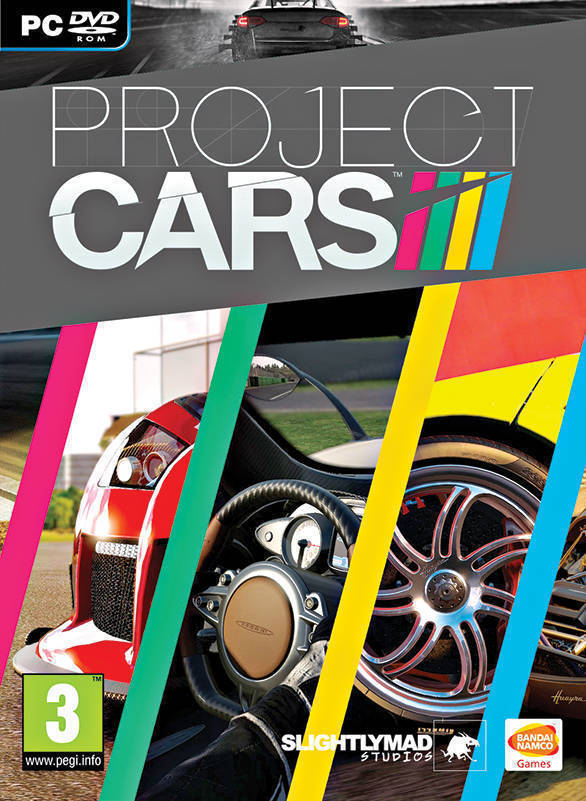
There are a host of games on offer right now, whether it's PC only, Xbox or PlayStation compatible. In terms of games compatible with virtual reality headsets, like the Oculus Rift, Dirt Rally is terrific for rally cars, while Project Cars is terrific for circuit racing. iRacing, also VR enabled but only PC and server based, is also a good option, but each individual car and racetrack needs to be purchased separately. But, since each actual racetrack is scanned by a laser before it's converted into graphics, you get the closest thing to reality. As far as the cars go, it's the best on offer, especially with VR goggles. Other options are Gran Turismo 6, Assetto Corsa and Forza Horizon 3. Special mention must also be made of R Factor, which is PC-only, but comes with the benefit of relying heavily on engineering input. Which means that wear and tear, rising tyre temperatures and degradation all play a huge part in the game. There are a host of games coming out in 2017 that are worth a look - Project Cars 2, Dirt 4, Gran Turismo Sport - all of which are VR ready. Forza 7 is expected this year too, but there's no word on a launch date.
For the amateur, or the pro on a tight budget
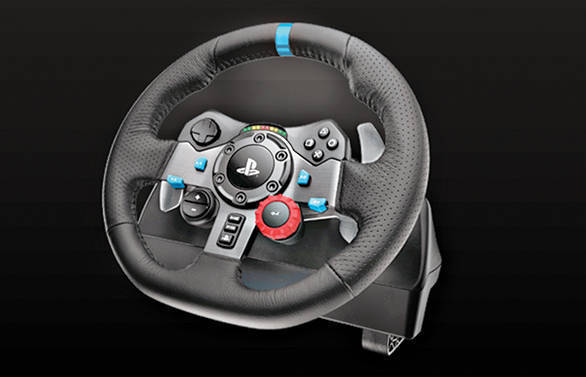 Logitech G G29
Logitech G G29
The Logitech G G29 is the most basic and most cost-effective steering wheel and pedals combination that you can buy. The steering wheel, which has paddle shifts behind it and offers force feedback, is sturdy, as are the pedals. A simple solution is to just place the pedals on the floor, mount the steering wheel onto whatever you have, and sit yourself down in a chair and start. This will set you back by around 224 or Rs 15,000. If you'd like to go one step further and make the set-up a little more professional, you can add a Playseat to the package, so that you come quite close to the feeling of sitting in an actual racing bucket seat. This will cost around 299 or approximately Rs 20,000. www.gaming.logitech.com
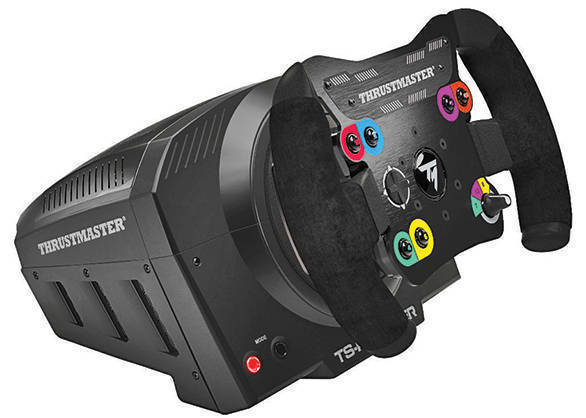 Thrustmaster TS-PC Racer
Thrustmaster TS-PC Racer
A slightly more expensive option is the Thrustmaster TS-PC Racer, which for a set of steering wheels and pedals costs approximately 550 or Rs 37,000. The overall quality of the TS-PC Racer is better, as is the feedback that it offers. What's particularly interesting about it, though, is that the company offers several steering wheel add-ons, pedal variants and gear-shift options, allowing you to customise the simulator system that you're building. Once again, you could choose to use this while sitting in an office chair, or you could spring for the Playseat. www.thrustmaster.com
For the enthusiast or the pro with some money to spend
Fanatec's ClubSport series is a good buy for someone who wants a slightly more professional set-up. The company offers a range of steering wheels that include both Formula car steering wheels and GT car steering wheels. It sells wheelbases which are critical to relaying feedback to the driver. And it offers a variety of driving pedals. They also offer racing seats, simulator cockpits, and accessories like a shifter and handbrake.
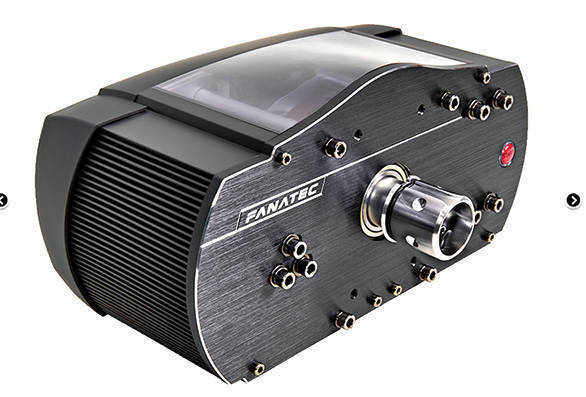 A Fanatec Clubsport Wheelbase
A Fanatec Clubsport Wheelbase
What is interesting, though, is that Fanatec allows you to customise minor details like the stiffness of the brakes. You can also add optional damper kits for the accelerator and brake, and adjust the hydraulic dampening resistance with a knob. And their steering wheels are highly individualised - replica steering wheels are available for Formula cars, or for machines like the BMW touring cars or even the Porsche 918. There are loads of other adjustments and adapters on offer. Theoretically, Fanatec could cater to all your simulator needs.
We spoke to one racecar driver who managed to put together a simulator for private training using bits and bobs from Fanatec. This included a ClubSport steering wheel, wheelbase, pedals, shifter and handbrake (thus allowing one to train for both Formula cars and GT cars).
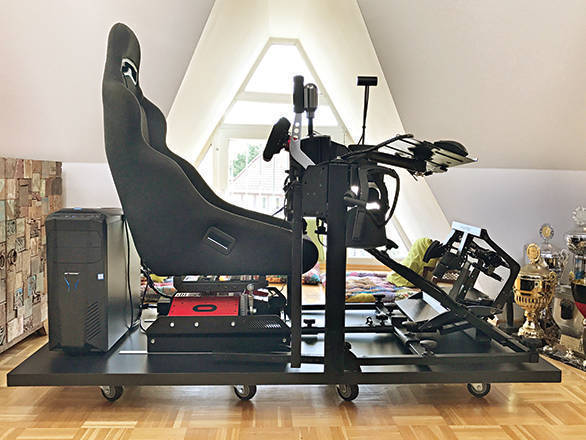 A home-built simulator put together using a Fanatec ClubSport steering wheel and pedals, with a Next Level Racing Motion Platform V2 and an Oculus Rift VR headset
A home-built simulator put together using a Fanatec ClubSport steering wheel and pedals, with a Next Level Racing Motion Platform V2 and an Oculus Rift VR headset
To make it more realistic, the Next Level Racing Motion Platform V2 (there's already a V3 model on sale) was added to the package, to help mimic the movement that a driver feels within the car.
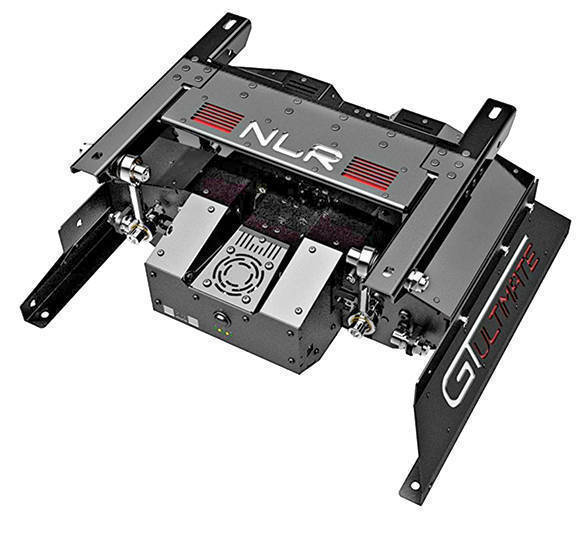 Next Level Racing Motion Platform V2
Next Level Racing Motion Platform V2
To really get into the simulation, the screen was tossed aside and, instead, a pair of Oculus Rift VR goggles were added.
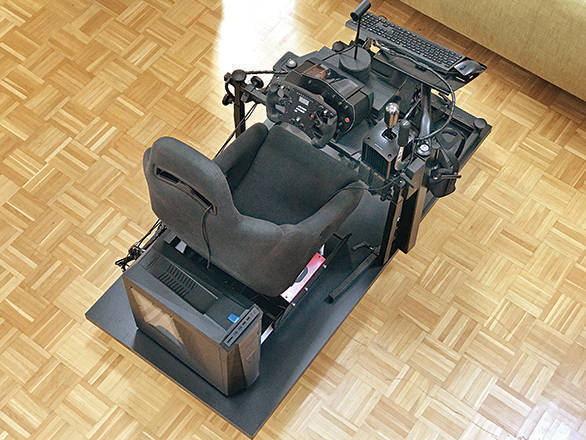 Aerial view of the home-built racing simulator
Aerial view of the home-built racing simulator
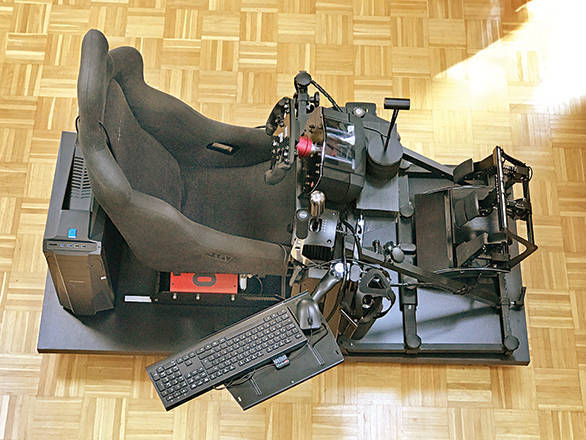 Simulators like this are convenient, very useful especially when paired with VR headsets, like this one is. Downside? You need a little bit of space to have one around.
Simulators like this are convenient, very useful especially when paired with VR headsets, like this one is. Downside? You need a little bit of space to have one around.
Now, let's not forget that a set-up like this, when put together, requires a little bit of space. But more importantly it requires a high-level gaming PC. All in all, complete equipment list included, the cost of parts for a simulator like this totals up to approximately 8,500 or Rs 6 lakh. www.fanatec.com / www.nextlevelracing.com
For pros with pockets full of gold
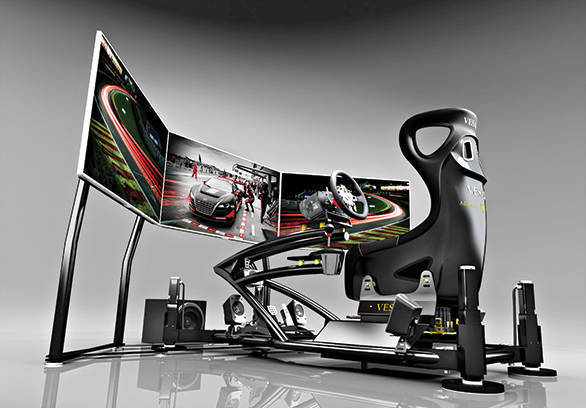 A Vesaro simulator with three screens
A Vesaro simulator with three screens
These are full-blown simulators that cost, depending on the variant that you opt for, anywhere between 25,000 and 50,000, which is between Rs 17 lakh and Rs 34 lakh. There are two particularly good options. The first is Vesaro, a company based in the UK, that builds some high-tech racing, F1 and flight simulators, all of which can be used with a single screen, three-screen option, or VR goggles. And there's Motorsport Simulator, a company based in the Czech Republic, that focuses on stimulating the inner ear (the part of the body that controls our perception of balance) in order to simulate the actual feeling one would have in a racecar. Worth a look. www.vesaro.com / www.motorsportsimulator.com
Starts Rs 2.55 Crore
5204cc
Automatic
610
530
7.63 Kmpl
